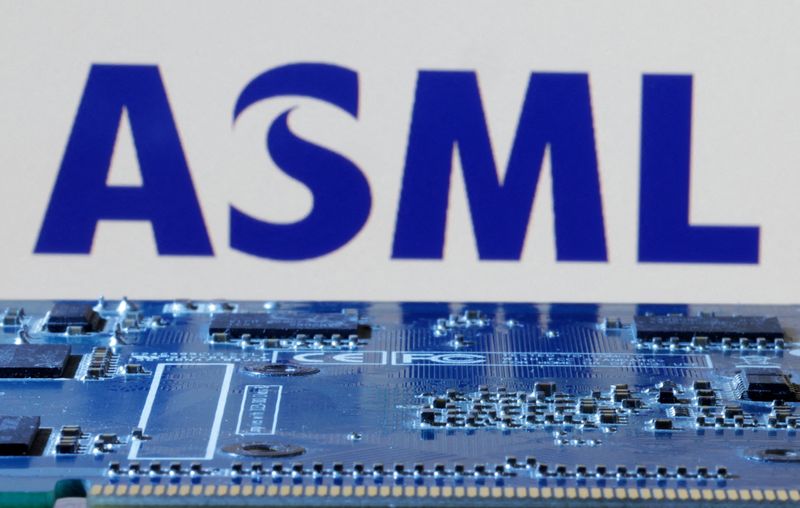Berkshire Hathaway reveals $4.3 billion stake in Alphabet, cuts Apple
Investing.com -- ASML Holding (AS:ASML) has been downgraded to “equal weight” from “overweight” rating by analysts at Barclays (LON:BARC), who now project the company’s 2026 revenues will fall 8% below consensus, in a note dated Tuesday.
The downgrade stems from a lack of positive catalysts and a challenging near-term outlook. Barclays now expects just 1% revenue growth in 2026, aligned with their forecast for the semiconductor equipment sector, with a recovery to 15% growth in 2027.
The primary concern centers on ASML’s EUV (Extreme Ultraviolet) business. Barclays’ updated model for EUV reveals difficulty in projecting any unit growth for 2026, shifting the focus to Average Selling Price as the main driver of EUV revenue.
They’ve lowered their EUV unit forecast to 50, down from 53, placing their 2026 revenue projections for EUV 7% below Bloomberg consensus.
Barclays also pushed out their expectations for High-NA (Numerical Aperture) EUV adoption in logic production until 2028.
This change follows comments from ASML’s lead customer, who indicated it may continue using existing EUV tools for the next generation of chips, delaying the ramp-up of High-NA adoption.
While this does not directly impact ASML’s economics, it may affect market perceptions of the company’s growth potential in the short term.
Barclays further questions ASML’s own forecast for 2026, where the company had previously expected growth. The analysts now model a modest 1% growth in 2026, with both downside and upside risks.
A major concern is the company’s order book, with backlog coverage for 2026 consensus revenue estimates at its lowest point in three years.
To meet consensus, ASML would need to secure a substantial increase in orders, potentially doubling the current order estimate of €5.3 billion by Q2 2025.
However, Barclays notes that Q3 tends to be a seasonally weak order period. The analysts expect TSMC to place an order for 10 EUV machines, valued at €2.3 billion, in Q2 2025, but see no other significant orders materializing.
They also flag that customer efficiency improvements could reduce tool requirements, further complicating ASML’s growth prospects.
In light of these risks, Barclays has lowered its price target for ASML to €650. They argue that, given the muted growth outlook and risks to 2026 revenue estimates, there is limited potential for a near-term rerating.
The biggest positive surprises, such as a rebound in spending from Samsung (KS:005930) or Intel (NASDAQ:INTC), are unlikely before 2027, at the earliest. Additionally, delays in High-NA adoption and customer efficiency improvements further dampen growth expectations.
Despite these challenges, Barclays remains positive on ASML’s long-term prospects. They forecast an 11% compound annual growth rate for the company from 2026 to 2030, suggesting that while near-term growth may be volatile, ASML remains well-positioned for sustained growth in the coming years.
However, the analysts caution that growth may remain more unpredictable in the near term due to these ongoing challenges.
